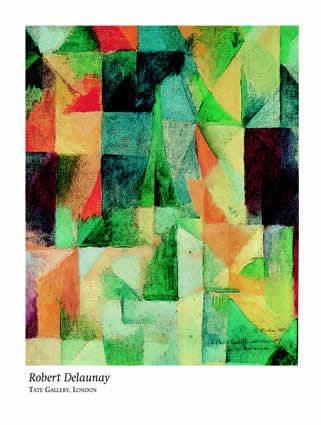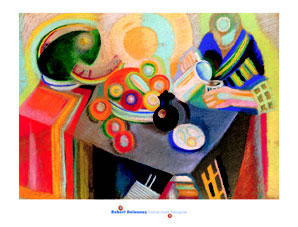
Learn foreign languages while watching your favorite YouTube videos!
The Language learning app is a handy set of tools that will help you improve your language skills by accessing subtitles, a built-in dictionary, and saving words and phrases you want to learn to revise.
Learning foreign languages will be an interesting and exciting experience for you!
Born: 1885
Died: 1941
Gender: Male
Nationality: French


“As an artist, as a manual craftsman, I wage my revolution on walls. I have now discovered new materials that can transform a wall, not only externally but in its very substance. Separate man from art? Never. I cannot separate man from art because I build houses for him! Even when fashion dictated easel art, I was already envisaging great murals.” Robert Delaunay.
Robert Delaunay was born in Paris to an upper class family. He started painting when he was young and served an apprenticeship with a theatrical designer from 1902 to 1904. Otherwise he had no formal training. He was first exhibited in 1904 at the Salon des Independents (he was the youngest exhibitor ever) and his work was clearly influenced by the Impressionists. He began to experiment soon after, however, taking pointillist ideas and stretching them to incorporate colour and movement.
By 1908 he was playing an active role in the development of Cubism. His painting ‘The Eiffel Tower’ (1910) was received with great acclaim, and two years later his ‘City of Paris’ caused a sensation at the Salon des Independents. Delaunay’s abstract works proved revolutionary in the development of French art. Apollinaire christened his style Orphism in the way the art had similarities with the abstract in music. By 1914 Delaunay was experimenting with wax. With the outbreak of the First World War he moved first to Portugal then to Spain where he worked briefly with Diaghilev. Relocating to Paris in the Twenties he collaborated with Leger in the Art Deco Exhibition and worked in set design on a number of films. His reputation declined somewhat in the latter part of his career but he continued to experiment with materials such as sand, mosaics and lacquered stone to be used in his acclaimed ‘Reliefs’ series. He had always had grand ambitions for his art and these were fulfilled with his commissions for the International Exposition in 1937. The following year with the help of his wife Sonia and others he decorated the Tuileries Salon where he created three enormous ‘Rhythms’.
Robert Delaunay was hugely influential on the Expressionist movement, indeed, he had initially been invited to participate in the first Blaue Reiter exhibition in 1913. Yet his work was also an inspiration for the Futurists in Italy and the American Synchronizes, and he had many social contacts within the Dadaist movement.